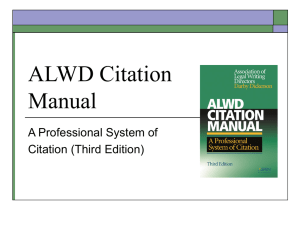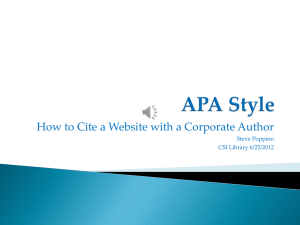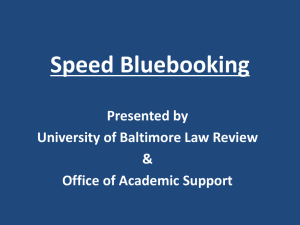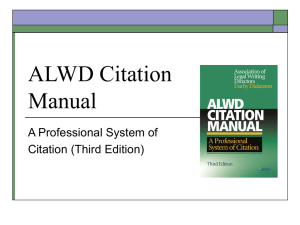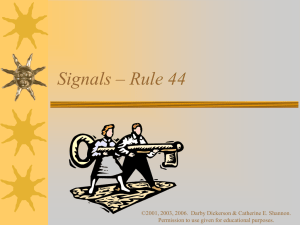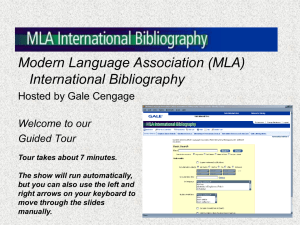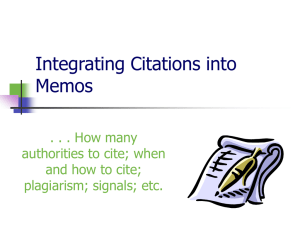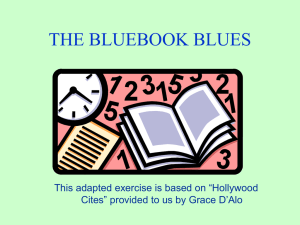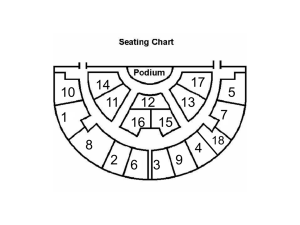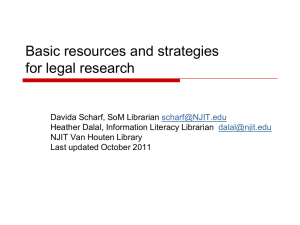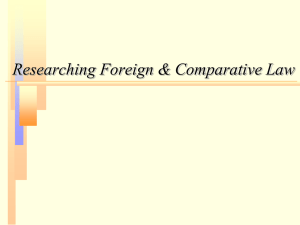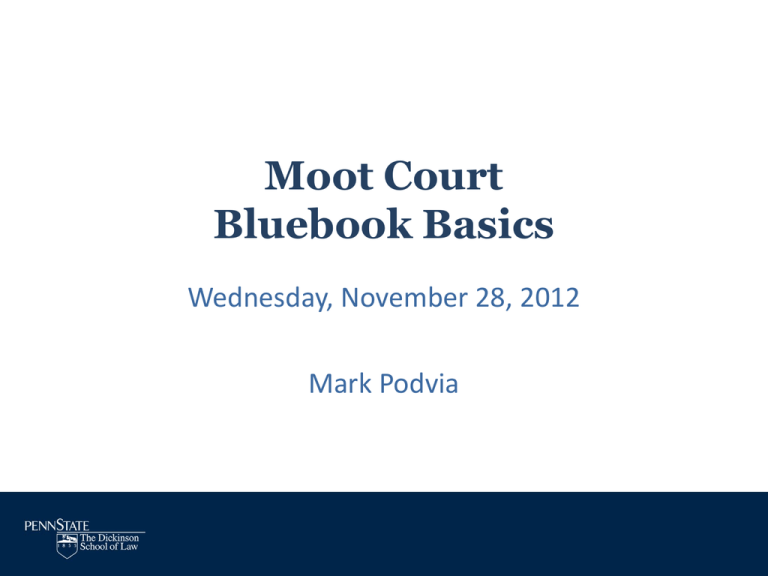
Moot Court
Bluebook Basics
Wednesday, November 28, 2012
Mark Podvia
History
First published in 1926 as A Uniform System of
Citation: Abbreviations and Form of Citation.
Only 26 pages long!
Nicknamed The Bluebook because it had a blue
cover.
11th Edition, published in 1967, is 117 pages.
18th Edition, published in 2005, is 415 pages.
19th Edition, published in 2010, is 511 pages.
Reviews
The plot is quite contrived and character development
is stagnant at best, regressive at worst. Apparently, the
authors think we'll automatically care for the
protagonist, "Statute." Well, newsflash, Harvard Law
Review, we don't! Personally (and I don't pretend to be
an author of any kind), I would have made "Periodicals"
the main character, instead of just an on-again off-again
third wheel. And he'd have a drinking problem. Also, it
doesn't take a genius to realize that for something to be
successful nowadays, it needs vampires! Think outside
the box, Harvard Law Review. Seriously.
--Amazon.com Review
Most of the time, I've been extremely pleased with
the editing I've received on articles. There are,
however, some practices that law review editors
routinely do that are incredibly silly and annoying.
They bother nearly every professor I talk to. And yet
they persist. One of the reasons is the Bluebook. The
Bluebook is a thick book with a blue cover filled with
more rules than the Internal Revenue Code. It is
written by a consortium of law reviews and its
primary purpose is as a money-making racket.
--Daniel Solove, George Washington University
There's no question that lawyers and
law professors must use citations, but
why on earth do they let a bunch of
nerdy, big-headed Harvard law students
make the rules? The Bluebook is
bloated, verbose, counter-intuitive,
poorly laid out, and remarkably anal
retentive.
--Amazon.com Review
“The Bluebook Blues” by the Hon. Richard A. Posner
http://www.yalelawjournal.org/images/pdfs/940.pdf
Why The Bluebook?
The Bluebook is designed to provide a systematic method by which
members of the profession communicate important information
about the sources and authorities upon which they rely in their
work.
Hence
George W. Bush et al vs. Albert Gore, Jr., et al, 531 U.S. 98, 121 S.Ct.
525, 148 L.Ed. 2d 388, 69 U.S.L.W. 4029 (2000).
becomes
Bush v. Gore, 531 U.S. 98 (2000).
Navigating The Bluebook:
Inside Back Cover—Quick Reference: Court Documents
and Legal Memoranda
Outside Back Cover
Index, page 475
Problem Areas
Typeface
Italicize or underline the following (Rule B1):
•
•
•
•
•
Case Names, including procedural phrases;
Titles of books and articles;
Titles of some legislative materials;
Introductory signals;
Explanatory phrases introducing subsequent case
history;
• Cross references such as id. or supra;
• Words and phrases introducing related authority,
such as quoted in.
In addition, italicize the following when they appear in
the text (rather than in a citation):
• Titles of publications;
• Words italicized in the original;
• Words you wish to emphasize and any other word
that would be italicized such as uncommon foreign
words.
EVERYTHING ELSE IS
IN ORDINARY
ROMAN TYPE!
(No LARGE and SMALL Caps)
Rule B2, Citation Sentences and
Clauses
Citations appear within the text of the
document as full sentences or as clauses
directly after the proposition they support.
Footnotes should be used only when
permitted by court rules.
Citation Sentence
A citation sentence cites authorities that relate to the
entire proceeding sentence. It may contain more than
one citation, with each citation being set off by a
semicolon:
The Second Circuit also did not decide whether the
Oneida Nation was entitled to the state law tax
exemptions for reservation land in tribal possession.
N.Y. Indian Law § 6 (McKinney 2001); N.Y. Real Property
Tax Law § 454 (McKinney 2008).
Citation Clauses
Citation clauses are set off from text by commas and
immediately follow the proposition to which they relate.
Use citation clauses to cite sources that relate to only part
of a sentence:
States may of course collect the sales tax from cigarette
wholesalers, either by seizing unstamped cigarettes off the
reservation, Washington v. Confederated Tribes of the
Colville Indian Reservation, 447 U.S. 134, 161-162 (1980), or
by assessing wholesalers who supplied unstamped
cigarettes to the tribal stores, City Vending of Muskogee, Inc.
v. Oklahoma Tax Comm’n, 898 F.2d 122 (10th Cir. 1990).
Signals
Rule B3 Rule 1.2, Introductory Signals
Rule B3.5 and Rule 1.3, Order of Signals
Rule 1.4, Order of Authorities within Each Signal
page 56
SIGNALS ARE CAPITALIZED WHEN USED TO
BEGIN A CITATION SENTENCE BUT LOWER CASE
WHEN USED TO BEGIN A CITATION CLAUSE!
DO NOT FEEL OBLIGED TO USE EVERY SIGNAL!
Rule B4, Cases
Italicize the case name, but do not italicize the
comma after the case name.
For state cases, cite according to court rules. This
might means citation to both an official reporter and
a regional reporter:
Commonwealth v. Noel, 579 Pa. 546, 857 A.2d 1283
(2004).
Rule B4.1.4 Pending/Unreported
Cases
Cite to LEXIS or Westlaw if available.
Docket numbers vary from court to court; cite to
the docket number exactly as it appears.
Rule B4.2, Short Citation Forms for
Cases
You may short cite using a party name, but do not
use U.S. as a short citation (using U.S. does not
clearly identify what is being referenced)
Id. is used only for the immediately preceding
citation and only if it contains a single authority.
Id. is capitalized only if it begins a citation
sentence.
Briefs, Court Filings and
Transcripts Rule 10.8.3, Page 107
Rule provides for citation to audio recordings of court
proceedings. Note that a timestamp should be used
for pinpoint citations. Also provides for citation to
recordings available online.
Rule B5, Statutes
Cite to the official code (U.S.C. for Federal) where
possible. Rule B5.1.1
Give the name of the statute only if it is commonly cited
that way or if the name would aid in its identification.
Rule 12.3.1 (a), page 114
The date for statutes should be 1) the year on the spine,
2) the year on the title page or 3) the copyright year in
that order of preference. Rule 12.3.2, page 115
Administrative and Executive
Materials
Rule 14, Page 133
Much of the material previously contained in Rule 14 is
available in Table 1.2, page 218.
Rule B5.1.4, Administrative
Material
Cite Federal Rules and Regulations to the CFR if
therein:
7 C.F.R. § 319.76 (2000).
B5.1.4, Page 17
Rule 14, Page 133
State Administrative Material
See Table 1 for citation to State Administrative
Compilations or Registers
1 Pa. Code § 9.201 (2012).
42 Pa. Bull. 6138 (Sept. 29, 2012).
Periodical Materials
Rule 16, page 147
The Internet, Electronic Media
& Other Nonprint Resources
Rule 18, page 164
The Bluebook requires the use and citation of
traditional printed sources when available unless there
is a digital copy of the source available that is
authenticated, official, or an exact copy of the printed
source.
If an online source is
available in a format that
preserves pagination (such
as a PDF), cite to that
format.
Rule B10 The Internet
Page 25
A full citation to an Internet source should
include the following:
1) The name of the author (if applicable);
2) The title of the specific page of the website
(if applicable);
3) The title of the main page of the website;
4) The date (and time if applicable);
5) The URL.
If there is no date associated with the specific matter
of the citation, use the following:
The date the website was “last modified” or “last
updated.”
The date the website was “last visited.”
Direct Citation to Internet Sources
Rule 18.2.2 (c), page 168
When citing to a Blog include a timestamp when
possible.
Podcasts and Recordings Available
Online
Rule 18.7.3, Page 175
Note that timestamps are optional.
LEGAL ABBREVIATIONS
Bieber’s Dictionary of Legal Abbreviations
Reserve, KF246 .B46 2001
HELP!
• Peter Martin, Introduction to Basic Legal Citation:
http://www.law.cornell.edu/citation/
• Linda J. Barris, Understanding and Mastering The
Bluebook, KF245, .B37 2007 (Reserve)
• Mark Podvia, 717-240-5015 (work), 717-226-8317
(cell), mwp3@psu.edu
Foreign and International Materials
Rule 20, Page 179 and Rule 21, Page
185
Tables:
T2, Page 277 Foreign Jurisdictions
T3, Page 426 Intergovernmental Organizations
T4, Page 428 Treaty Sources
Rule 20
Foreign Jurisdictions
See Table 2, beginning on page 277, for abbreviations
for foreign jurisdictions.
• 40 Countries are included in Table 2, plus the
Catholic Church, Hong Kong and Roman Law.
• Iraq and Iran are included; Afghanistan is not.
For sources not present in Table 2, follow the
respective country’s own citation rules as modified by
Rule 20 (Foreign Materials), beginning on page 179.
Rule 20.1 Jurisdiction
Unless the jurisdiction is clear, indicate it
parenthetically (abbreviations found in Table 10).
Rule 20.2 Non-English
language documents, page 179
For documents published in multiple languages use
the English version whenever it is as authoritative as
other versions. 20.2.1.
When citing to a document in a language other than
English always give the full title or name in the
original language the first time the document is cited.
20.2.2.
Translate all titles, name or words cited that are not in
the Roman alphabet using a standard transliteration
system. 20.2.4.
If a translated version of a foreign language primary
authority exists, cite it using translated in. 20.2.5.
Rule 21 International Materials
See Table 3, starting on page 426, for abbreviations
for Intergovernmental Organizations.
Treaty Sources, Rule 21.4.5
Note the distinction between agreements to which
the US is a party and agreements to which the US is
not a party, pages 189-90.
I.L.M.
Questions?



